Rattlesnakes have the most deadly venom of any snake in North America. They can be found as far north as southern Canada, and as far south as Argentina. There are many snakes that look like rattlesnakes but aren’t nearly as dangerous. Rattlesnakes possess a hemotoxic venom that they use to rapidly kill and digest their prey. But, fortunately for humans, rattlers would much rather bite a nice mouse or rat than attack a human.
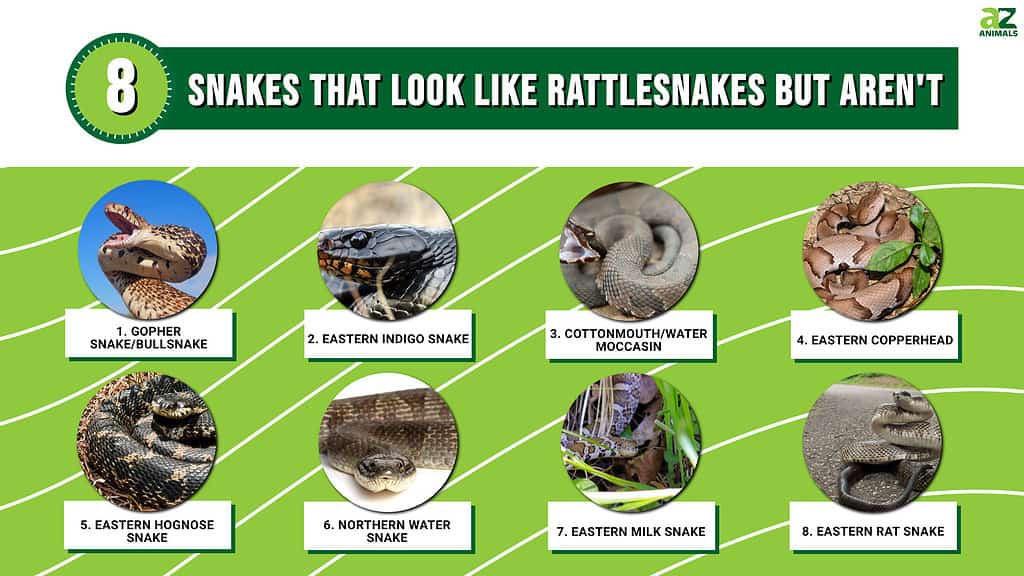
Here, we’ll learn about the eight species of snake most commonly confused with rattlesnakes. Why is it important to know the difference? Well, no matter the type of snake, you should avoid handling it. Remember, all snakes are wild animals, and don’t want to be touched. But, in the case of the rattlesnake, it’s especially important to know whether the snake you’re looking at is, or isn’t, a rattler. Rattlesnake bites can become life-threatening if left untreated, whereas the bites of other, non-venomous snakes, are not life-threatening.
1. Gopher Snake/Bullsnake
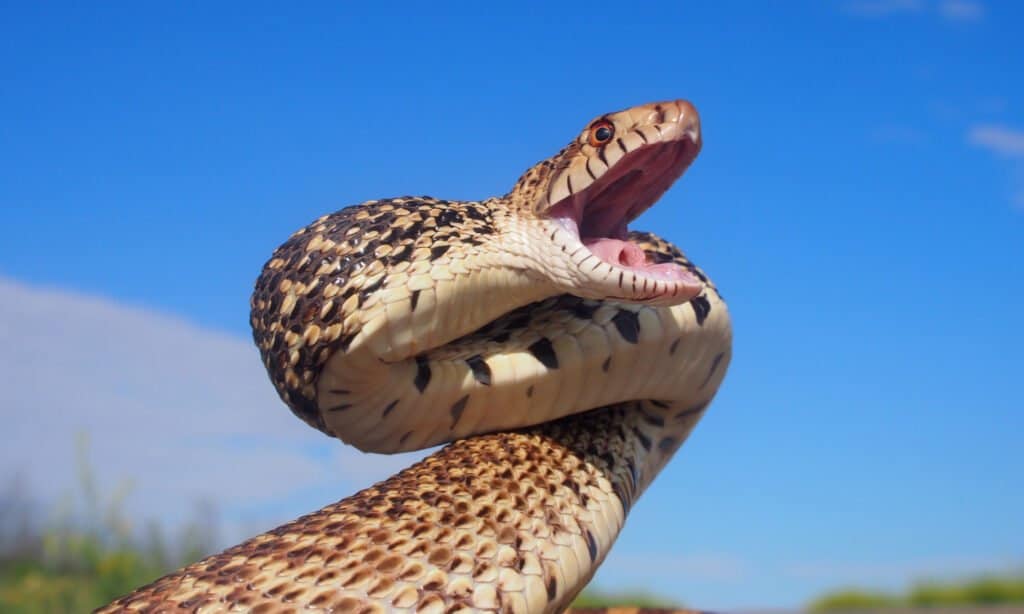
Bullsnakes look like rattlesnakes but have differently shaped heads.
©Markparker1983/Shutterstock.com
Bullsnakes, which are a type of gopher snake, occupy many of the same places as rattlesnakes. At first glance, the two look similar—they both have diamond-shaped patterns running down their bodies. But, bullsnakes are non-venomous, and have actually evolved to look like rattlesnakes so that would-be predators leave them alone.
The best way to tell a bullsnake from a rattler is by looking at the head; rattlesnakes have spade-shaped, triangular heads, whereas bullsnakes have narrow heads that are the same width as their necks. Also, bullsnakes lack a rattle.
2. Eastern Indigo Snake
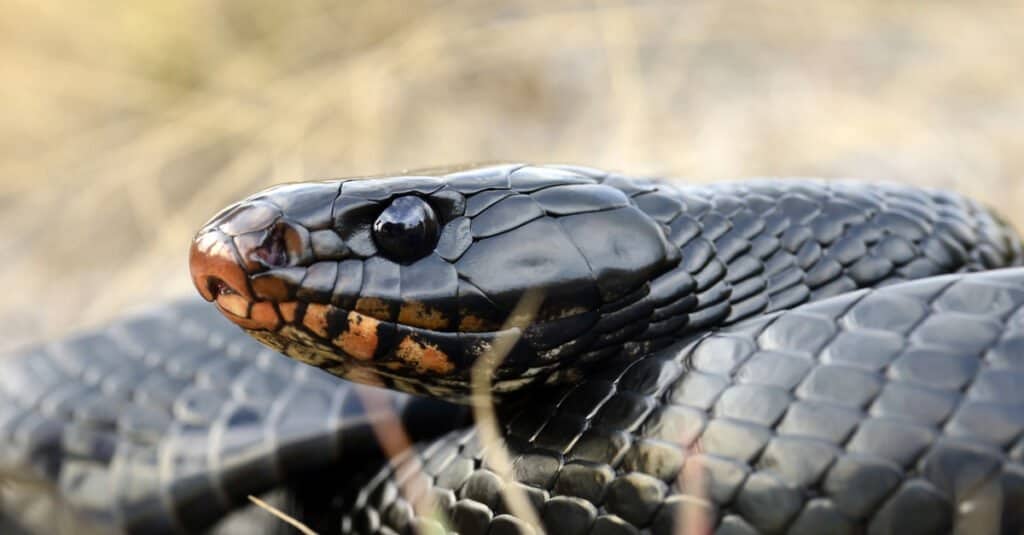
The Eastern indigo snake is a long, muscular snake with large smooth blue-black scales that are iridescent purple in the light.
©Patrick K. Campbell/Shutterstock.com
The eastern indigo snake is so named for the beautiful blue-black color of its scales. Only the head is differently colored, with a flush of orange scales on the underside. With such a huge difference in coloring—rattlesnakes are yellow-brown with a repeating diamond pattern—indigo snakes aren’t likely to be mistaken for rattlers on looks alone.
However, eastern indigo snakes have been known to vibrate the tips of their tails as if they had a rattle in an attempt to mimic rattlesnakes. Rest assured though, indigo snakes are non-venomous and do not present a danger to humans — besides they feast on rattlers!
3. Cottonmouth/Water Moccasin
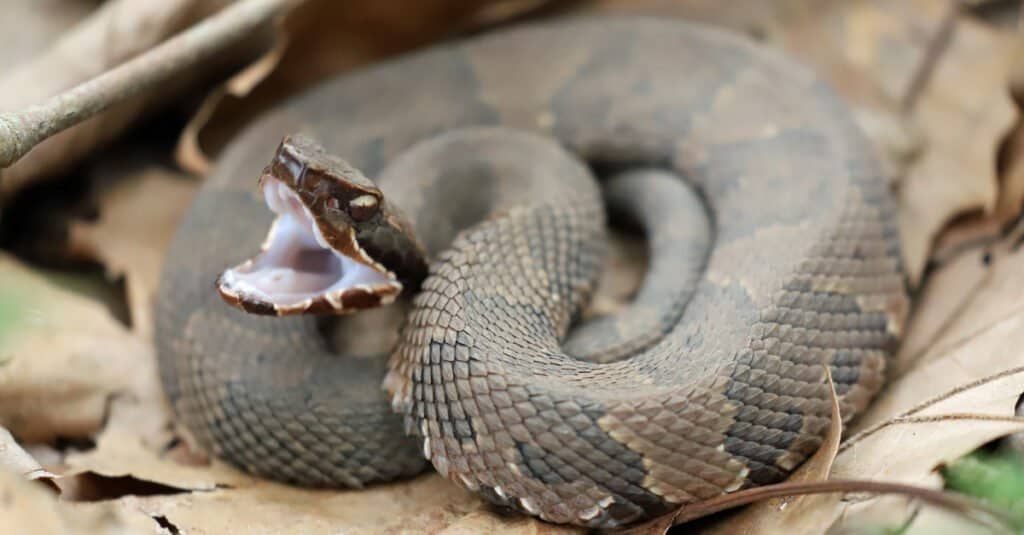
Cottonmouths are named for the whites in their mouth when opening their jaws.
©KF2017/Shutterstock.com
Water moccasins, also known as cottonmouths, are common in the southeastern United States. They’re sometimes confused with rattlesnakes; both are venomous and bites require immediate medical attention. However, cottonmouths are semi-aquatic, whereas rattlesnakes live on dry land.
Cottonmouths don’t have rattles, and they also don’t have the striking diamond pattern markings of rattlesnakes. Cottonmouth coloring varies, but they’re typically duller than rattlesnakes, and smaller.
4. Eastern Copperhead
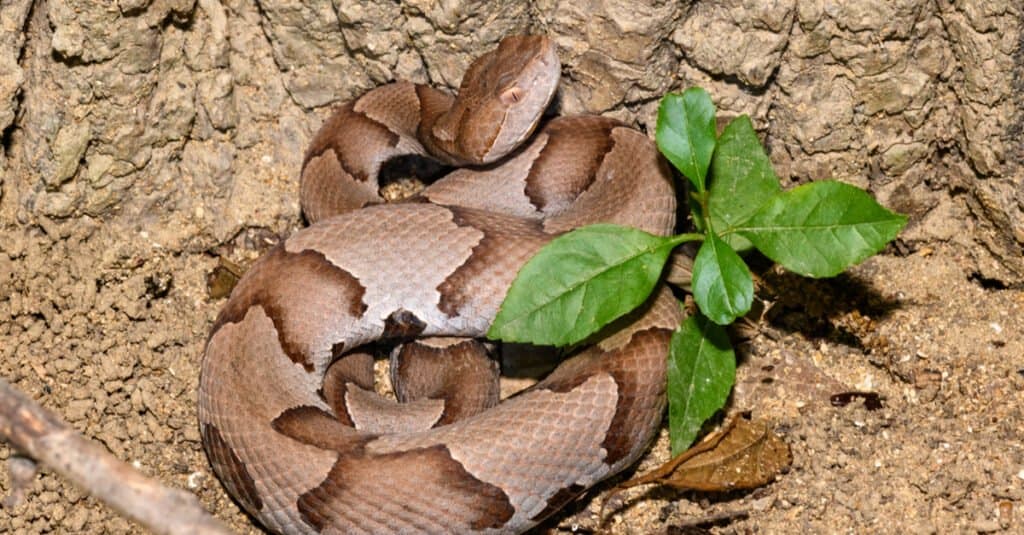
Eastern copperheads have similar coloration to rattlesnakes.
©Jeff W. Jarrett/Shutterstock.com
Copperheads, as eastern copperhead snakes are commonly called, are found throughout the eastern United States. Like rattlers, they’re members of the pit viper family and can sense heat. They’re venomous and occasionally bite humans, but they’re not rattlesnakes. Copperheads are also often confused with corn snakes, eastern milk snakes, and eastern rat snakes.
Rattlesnakes, of course, have rattles, whereas copperheads do not. Copperheads have hourglass-shaped markings, while rattlesnakes often have diamond-like patterning. Rattlesnakes tend to be yellow to brown in color, while copperheads are closer to orange. Further, copperheads lack the distinct spade-shaped head of the rattlesnake.
5. Eastern Hognose Snake
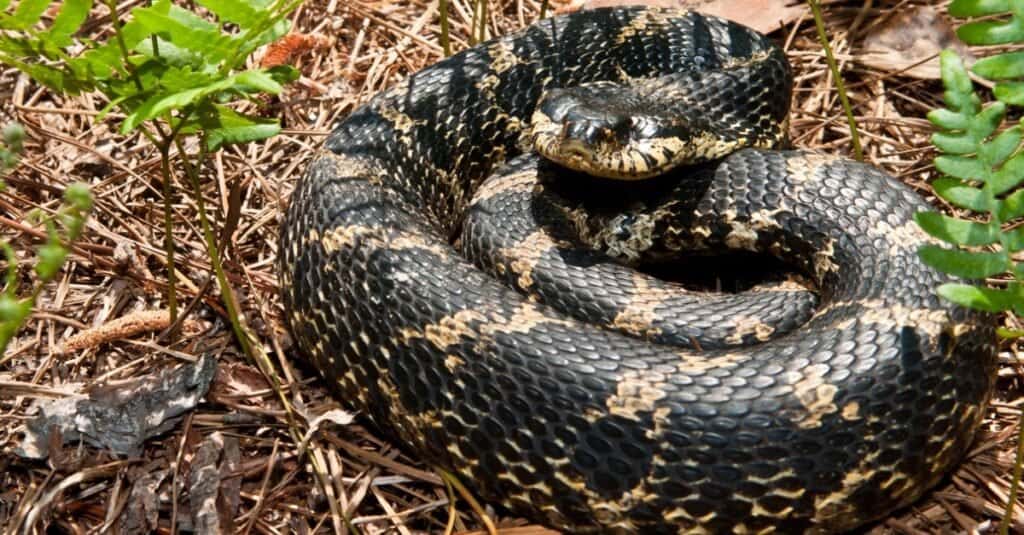
Eastern hognose snakes will flatten their necks to appear bigger.
©iStock.com/JasonOndreicka
Hognose snakes, also known as puff adders, are native to the eastern half of the United States. They can be found as far south as Florida, and as far north as Canada. When threatened, they actually flatten their necks and open their mouths wide to make themselves look bigger. Rattlesnakes, on the other hand, do not flatten their bodies, instead choosing to rattle their infamous rattles to ward off attackers.
Eastern hognose snakes range in color from yellow and brown with rattlesnake-like markings, to pure black. Perhaps the easiest way to differentiate them from rattlers is by the head—it’s narrow, with a pointed, hog-like snout.
6. Northern Water Snake
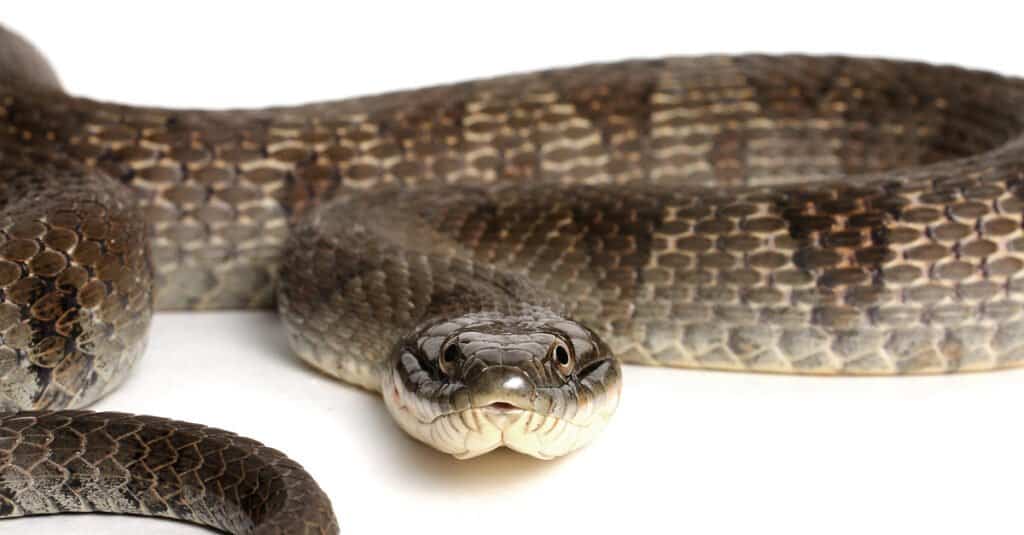
Northern water snakes range across much of ther eastern United States and can easily be confused with rattlesnakes.
©Michiel de Wit/Shutterstock.com
One of the more common snakes in the eastern United States is the northern water snake. These snakes grow up to five feet in length and spend their lives in riparian environments. These include rivers, lakes, ponds, and swampy areas. Unlike rattlesnakes, northern water snakes are semiaquatic, and spend most of their time hunting for frogs, salamanders, and toads. Northern water snakes look like rattlesnakes, with a few key differences.
The easiest way to tell the difference between a rattlesnake and a northern water snake is by the presence of a rattle. After that, the shape of the head is the next biggest indication. Northern water snakes have heads that are no wider than their necks, while rattlesnakes have distinct, triangular heads.
7. Eastern Milk Snake
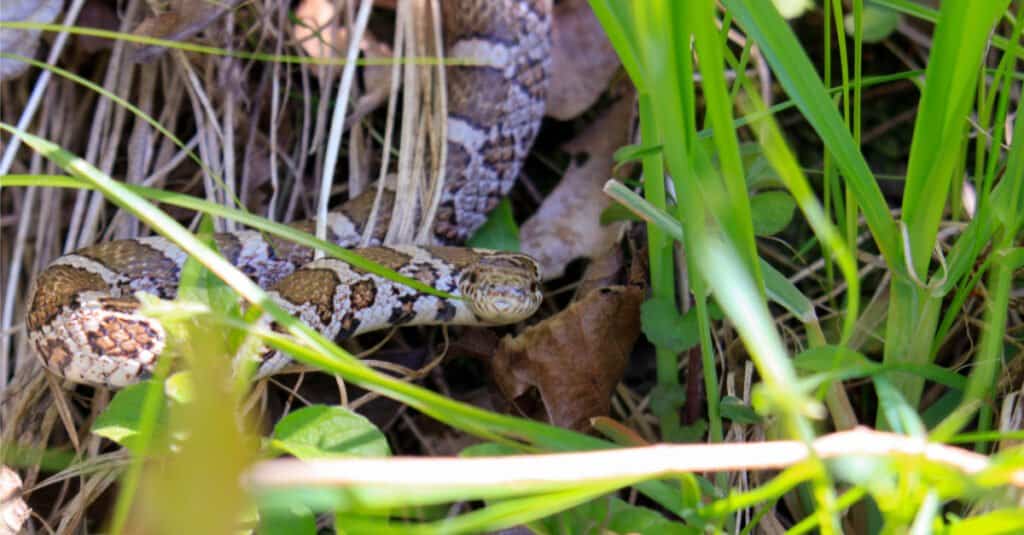
Eastern milk snakes may be confused with rattlesnakes, but they’re harmless!
©iStock.com/mynewturtle
Of all the snakes confused with rattlesnakes, the eastern milk snake may just be the most innocuous. Eastern milk snakes prey on small creatures like mice and shrews, and they like to stay hidden from humans. Unlike rattlers, who can grow up to eight feet in length, eastern milk snakes rarely exceed three feet.
Eastern milk snakes aren’t venomous, and they don’t have rattles. Further, they don’t have the characteristic leaf-shaped heads of rattlesnakes. Their coloring ranges from tan and orange to yellow and brown; they’re often much more vibrant than rattlesnakes. Eastern milk snakes aren’t just smaller, and less dangerous than rattlers, they’re also gentler, and very unlikely to bite.
8. Eastern Rat Snake
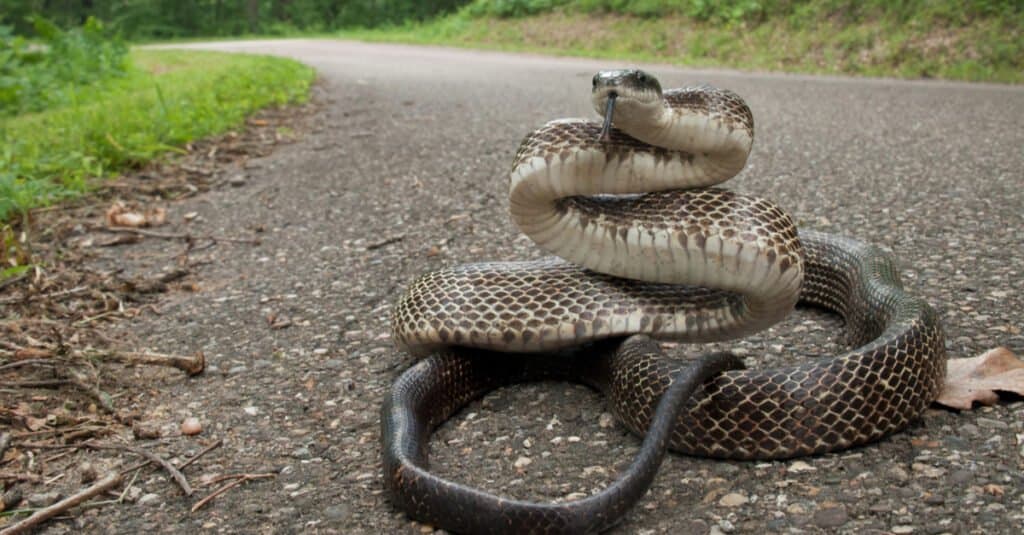
Eastern rat snakes grow to large sizes but are very different in appearance compared to rattlesnakes.
©Mike Wilhelm/Shutterstock.com
The eastern rat snake is also sometimes called the black rat snake, a somewhat misleading name. Rat snakes actually come in black, yellow, and patterned variations. They can grow up to eight feet long and live across the eastern United States. Like many species of snake, they’re non-venomous and strictly eat small mammals, reptiles, amphibians, and eggs.
People occasionally mistake rat snakes for rattlesnakes, though there are a few easy ways to tell the difference between the two. First, rat snakes have no rattle, nor do they have diamond markings. Further, rat snakes have narrow heads and lack the heat-sensing pits in front of their eyes that rattlesnakes have. Rat snakes might grow to large sizes, but they present no threat to humans or pets.
Other Reptiles That Look Similar
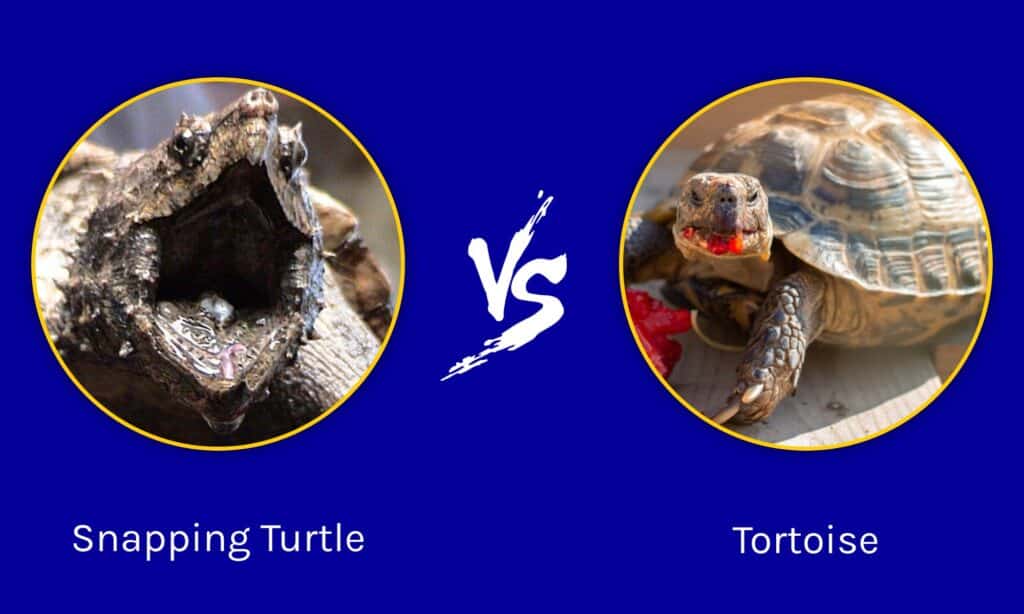
There are several types of reptiles that look very similar and can often be mistaken for one another. The most common example is the chameleon family, which includes Panther Chameleons, Veiled Chameleons, Jackson’s Chameleons, and Flap-Necked Chameleons. These species all have a similar body shape with a long tail and four legs. They also share some coloration patterns, like the presence of stripes or spots on their bodies. However, it’s easy to tell them apart if you know what to look for because they each have distinctive features, such as different head shapes or horns on certain species.
Another group of reptiles that often get confused are turtles and tortoises – although these two animals may have a similar shell shape, they are actually quite distinct from one another in many ways. Turtles typically live in water, while tortoises live primarily on land. Turtles will also tend to have flatter shells compared to the domed shells of tortoises which help protect them from predators when living on land. Additionally, turtle feet are webbed, while those of tortoises lack this feature entirely due to their lifestyle differences, so this can be used as an identifier when trying to tell apart these two species.
Finally, we come to snakes – there are thousands upon thousands of snake species across the world, but even within a single genus, there can sometimes be confusion between various members due mainly to similarities in coloring.
Summary Of 8 Snakes That Look Like Rattlesnakes (But Aren’t)
| Rank | Snake |
|---|---|
| 1 | Gopher Snake/Bullsnake |
| 2 | Eastern Indigo Snake |
| 3 | Cottonmouth/Water Moccasin |
| 4 | Eastern Copperhead |
| 5 | Eastern Hognose Snake |
| 6 | Northern Water Snake |
| 7 | Eastern Milk Snake |
| 8 | Eastern Rat Snake |
Bonus: What Keeps Snakes Away?
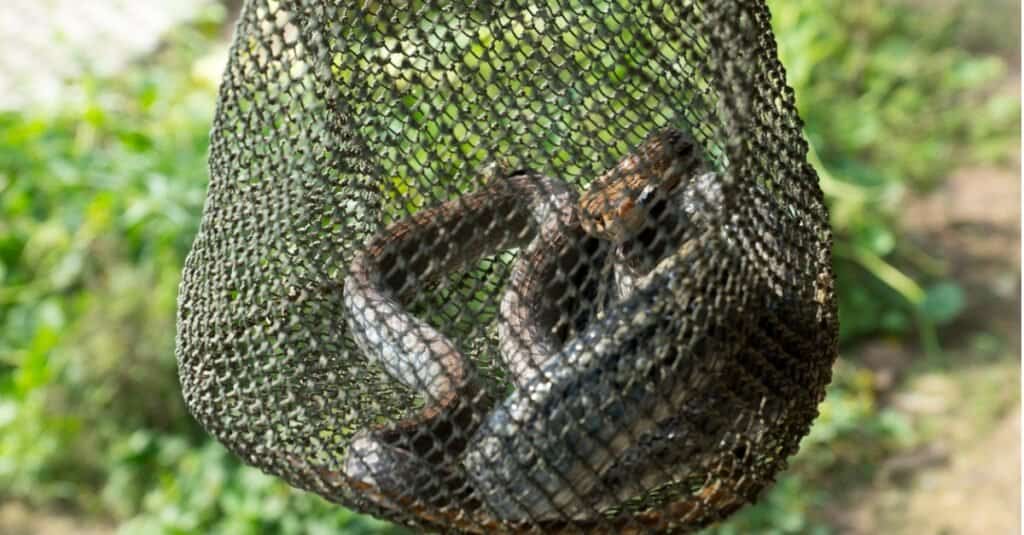
Professional snake traps are one useful tool to help rid your property of unwanted snakes.
©Tuttoo/Shutterstock.com
While snakes in the wild serve a valuable purpose by keeping down rodent populations, some people are just unable to see the good in these slithering serpents. You especially would not want one slipping into your home unannounced! So what are some ways to keep snakes outside where they belong, and preferably, out of your yard as well?
Below are 10 simple steps you can take to help keep the snake population down in and around your home:
- Sealing Up Cracks–You’ll need to search the perimeter of your home for access points, warm or damp crawl spaces, or holes in your home’s foundation or near ground level. Storm drains are also attractive to snakes. Sealing these entry points appropriately is a start to keeping snakes out.
- Removing Potential Food Sources–You may not have realized that bird feeders are potential problems, as they not only attract birds but also rodents and insects, both of which attract snakes. Outdoor pet food can have the same effect. If possible, feed your pets indoors and keep any outdoor seed or other foods in sealed containers.
- Removing Standing Water–Standing water can attract frogs, lizards, small mammals, and snakes. Try to reduce standing water as much as possible, even if it means watering your lawn less.
- Trapping the Snake–If there are just a few pesky snakes troubling you, you can purchase professionally-made snake traps at your local hardware store and try to snag them. Rather than killing them, consider transporting the snakes about 6 miles away and freeing them in the wild.
- Building Strong Fences–There are special types of fences that can keep snakes out, usually made of vinyl or tight wire mesh. Consulting your local hardware store for advice can help with this strategy.
- Employing Proper Landscaping and Maintenance–Snakes are drawn to areas of overgrown vegetation, loose debris, wood piles, or other areas where they can hide. Keeping your yard maintained regularly can help cut down on places for snakes to hang out.
- Bringing in Domesticated Fowl–This may be an extreme solution, but domestic fowl like chickens are capable of managing snake populations, especially roosters, who protect hens and chicks from danger.
- Luring Birds of Prey–Growing tall trees with strong branches can be a way to attract birds of prey like owls, who like to prey on snakes. Another idea would be to build a nesting box to make them feel at home.
- Calling Wildlife Control–When all else fails, there’s always the option of calling a professional to come remove an unwanted snake from your property. Exterminators are also valuable, as they can help rid your house of rodents, which attract snakes.
- Removing Debris and Keeping Woodpiles Off the Ground–This one is similar to #6, but focuses on woodpiles, which should not be left sitting on the ground if you want to keep snakes away. Elevating them will help deter snakes, as well as remove empty containers and piles of debris where snakes may gather.
The photo featured at the top of this post is © Markparker1983/Shutterstock.com
Discover the "Monster" Snake 5X Bigger than an Anaconda
Every day A-Z Animals sends out some of the most incredible facts in the world from our free newsletter. Want to discover the 10 most beautiful snakes in the world, a "snake island" where you're never more than 3 feet from danger, or a "monster" snake 5X larger than an anaconda? Then sign up right now and you'll start receiving our daily newsletter absolutely free.
Thank you for reading! Have some feedback for us? Contact the AZ Animals editorial team.






